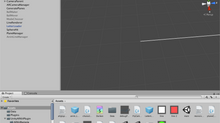Open Source Cinema | Social | Serializing Cinema
Homework links:

Finding Regularities in the Format and in the Consumption -> Universality
What came into my mind immediately when tasked to serialize cinema is to dissect the visual within a frame into foreground & background. Then, I thought of the classical three-act structure of a story: setup, conflict, and resolution.
Why do we (or at least, I) prefer a narrative (feature-length films) to be structured into three or five acts? I assume it's because it's just how my brain is wired to process it – maybe, my cognition and emotional journey are best facilitated in this format.
Like how letters are codes for not only a physical phenomenon (sounds) but also a meaningful action (words, forming sentences), cinema is also a code for us to consume narrative and stories. And in that sense, when finding the regularities in physical phenomena within cinema, I should also keep in mind the bigger, meaningful action.
Traditional Cinema Components
Content
Foreground
Character
Outfit
Expression
Action
Dialogue
Object
Appearance
Action
Pixel values
Background
Physical objects
Space
Pixel values
Relationship between the character and the background
Sound
Character dialogue
Environment sound
Sequence
Frame number
Scene number
Narrative Elements
Character
Type: Protagonist / Antagonist / Deuteragonist
Profile
Character motivation
Character background
Physical profile
Age
Gender, etc.
Story Arc: Setup / Confrontation / Resolution
Setting
Time/Era
Location
Character’s action (description of what happens in the story)
Social "Cinema"
I also thought of another way I consume narratives: binge-browsing. Different from staring at a screen for a prolonged period of time, binge-browsing is faster, non-linear, greatly varied in terms of content, and haphazard.
Yet I consume more content and narrative by binge-browsing and not by watching conventional cinema pieces. So what can cinema learn from content whirlpool that is social platforms? Perhaps, similar to how a story is divided into three acts to accommodate my cognition and emotional journey, the act of consuming should be divided into several parts as well.
Intention: What do I need to know? What do I want to know?
Attention: What else is interesting for me to look at?
Larger experience: How does this piece of content relate to the larger identity and experience that I've built over the years? Does it reassert my values and beliefs?
Maybe this is far-fetched, and has no practical implications at all in serializing cinema. But I would like to think that there is value in investigating what compels people to consume a narrative. Finding the regularities in these compel-factor might not yield in modular elements a producer can use to make a story, but it would empower the producer to break out of technicalities and facilitate narrative-consumption in an almost feral way.
Social "Cinema" Components
Meta data
Time
Platform
Importance:
Number of impressions
Number of shares
Content
Text string
Visual content
Audio content
Thesis
Quality: objective(declarative), subjective(opinion)
Authorship
Author Identity
Intent: to promote, to seed chaos
Political Affinity












